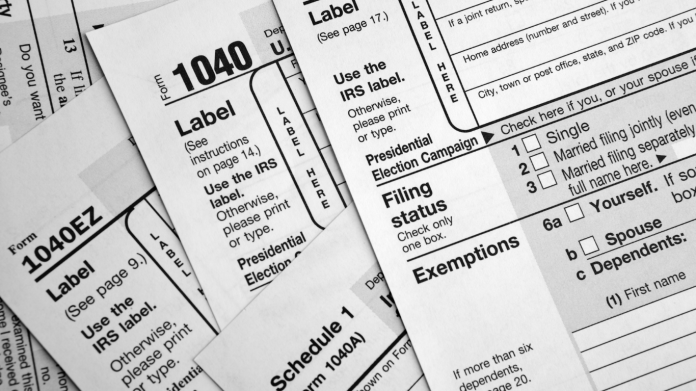In the realm of personal finances and taxation in the United Kingdom, understanding the SA100 form is crucial. Whether you’re self-employed, a freelancer, or earn income outside of PAYE, the SA100 form plays a pivotal role in ensuring you comply with HMRC regulations. This comprehensive guide aims to demystify the SA100 form, providing you with everything you need to know from its purpose to practical tips on filling it out correctly.
Understanding the SA100 Form
The SA100 form, also known as the Self-Assessment Tax Return, is the document used by HM Revenue and Customs (HMRC) to collect information about your income and capital gains for a particular tax year. It is essential for individuals who fall outside the scope of PAYE (Pay As You Earn) taxation, such as self-employed individuals, freelancers, landlords, and those with multiple sources of income.
Why is the SA100 Form Important?
Filing an SA100 tax form is not just a legal requirement; it’s a way to ensure that you’re paying the correct amount of tax based on your total income and claiming any eligible tax reliefs or allowances. It allows HMRC to calculate your tax liability for the year and reconcile any overpayments or underpayments of tax.
How to Fill Out SA100 Tax Form
1. Gather Your Information
Before starting your SA100 form, gather all relevant documents:
- P60/P45 (if applicable)
- Records of income from self-employment, investments, and property
- Details of any pension contributions or charitable donations
- Receipts for allowable expenses
2. Understand the Deadlines
The deadline for submitting your SA100 form online is 31st January following the end of the tax year it relates to. For example, the deadline for the 2023/24 tax year would be 31st January 2025. Missing the deadline can lead to penalties, so it’s essential to file on time.
3. Complete the Form
The SA100 form consists of various sections:
- Personal Information: Name, address, National Insurance number.
- Income: Details of income from employment, self-employment, pensions, and other sources.
- Deductions: Allowable expenses related to your employment or business.
- Tax Calculation: HMRC calculates your tax liability based on the information provided.
4. Submitting the Form
You can submit your SA100 form online through the HMRC website or by mail. Online submission is generally faster and allows you to receive instant confirmation of receipt.
SA100 Form for Self-Employed Individuals
If you’re self-employed, the SA100 form becomes even more crucial. It requires you to report your business income and expenses accurately. Here are some additional tips:
- Keep detailed records of your business income and expenses throughout the tax year.
- Use accounting software or spreadsheets to track your finances, making it easier to fill out the SA100 form.
- Consider seeking professional advice from an accountant to ensure compliance and maximise allowable deductions.
SA100 Tax Form Requirements
The SA100 form has specific requirements that must be met to avoid penalties:
- Accuracy: Ensure all information provided is accurate and up to date.
- Completeness: Fill out all relevant sections of the form, including supplementary pages if necessary.
- Timeliness: Submit the form and pay any tax owed by the deadline to avoid late filing penalties.
SA100 Form Submission Deadline
As mentioned earlier, the deadline for submitting your SA100 form is 31st January following the end of the tax year. It’s crucial to mark this date in your calendar and ensure you have all necessary documents ready well in advance.
Additional Considerations When Filling Out the SA100 Form
Beyond the basics, there are several nuanced aspects of the SA100 form that can affect your tax return process:
Capital Gains Tax (CGT)
If you’ve sold assets such as property or investments during the tax year, you may need to report capital gains on your SA100 form. Understanding CGT allowances and rates can help minimise your tax liability.
Foreign Income
If you have income from overseas sources, it must be reported on your SA100 form. Consider any double taxation agreements that may apply to avoid paying tax on the same income in both the UK and abroad.
Claiming Tax Reliefs and Allowances
The SA100 form allows you to claim various tax reliefs and allowances, such as:
- Marriage Allowance
- Blind Person’s Allowance
- Working from Home Allowance (especially relevant for self-employed individuals)
Ensure you’re aware of all eligible reliefs and claim them where applicable to reduce your overall tax bill.
Conclusion
In conclusion, understanding what is an SA100 form and how to complete it is essential for all taxpayers in the UK who fall outside the PAYE system. By following the guidelines outlined in this guide, you can ensure compliance with HMRC regulations while maximising tax efficiency. Remember, if you’re unsure about any aspect of the SA100 form, seek advice from a qualified tax professional who can provide tailored assistance. For more detailed guidance on specific sections of the SA100 form or for personalised tax advice, visit the HMRC website or consult with a tax advisor. Taking proactive steps now can save you time, money, and potential penalties in the future. Now that you’re equipped with this knowledge, go ahead and tackle your SA100 form confidently!
